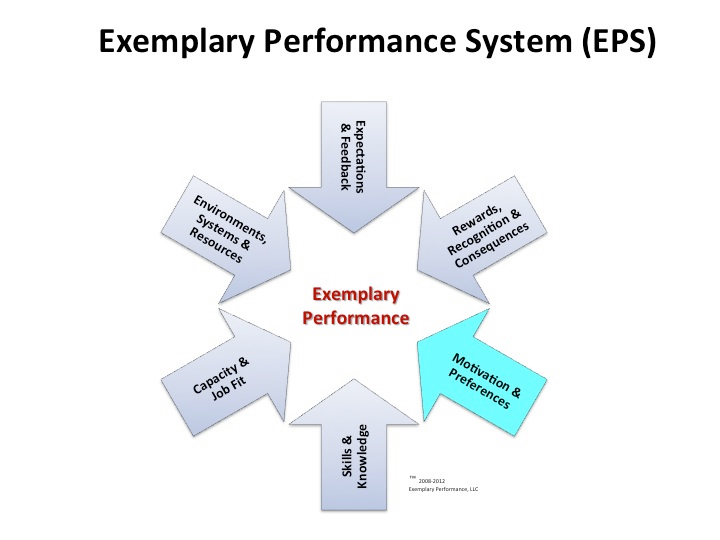ATD Blog
Exemplary Performance Three Key Ingredients for Success
Tue Nov 19 2013

Motivation
Motivation is something that we all bring to the job—at least initially. If you think back to your first day on a job, you probably got up early, obsessed over what you would wear, showed up early in the office, and likely had a little bounce in your step brought on by thoughts of all the ways you planned to succeed in your new job. You might even be one of the fortunate individuals who managed to maintain that positive spring in your step months or even years later.
However, most are not so fortunate. Typically, it takes only six months for the ineffective systems and broken processes found in most organizations to wipe out these positive expectations about what an individual performer can expect to achieve. So what happened?
To continue optimal performance, a leader must provide a systematic motivational design that aligns with the needs of each performer or team. That system consists
the individual and their particular set of internal motivational characteristics
the work environment and the tactics and strategies that impact the goal-directed efforts and responses of individuals to the system.
Indeed, systematic design and implementation offers a way to influence motivation in a predictable and measurable way.
Intentionality
Exemplary performers tend to focus on accomplishments (results, outputs, or deliverables) rather than activities or tasks. This focus provides them with a clear picture of their goals and helps them accurately judge whether or not they are producing worthy accomplishments.
The leader’s role in supporting such intentionality should include the following strategies and focus:
provide clarity in how your team’s accomplishments fit into the organization as a whole
ensure each team member has clarity around his or her accomplishments
provide frequent, targeted feedback on progress to both team and individual performers
give specific corrective feedback (quantity, quality, and timeliness) when a performer or team’s accomplishments are inadequate.
Practicing these leadership behaviors will support, sustain and enhance the intentionality that your team members bring to the table.
Directed practice
Successful performers need a high quantity and quality of practice in order to maintain high levels of performance. The practice of experts is characterized by its conscious, deliberate properties—namely a high level of concentration and the structuring of specific practice tasks tied to appropriate personal goals, feedback, and opportunities for repetition and error correction.
In addition, strategic awareness (a high level of personal awareness) is necessary to overcome existing patterns. This enables the performer to accurately self-monitor and make required adjustments or improvements.
What makes deliberate practice work? The most important effect of practice in great performers is that it takes them around the limitations that most of us think of as barriers.
Is there an area in your role where you could be more intentional in improving your performance? Where might you apply directed practice to sharpen your results? Let us hear from you as you apply these tools in your organization.
For more on how to shift the performance curve, check out Al Folsom’s previous blog article or browse the full series.
